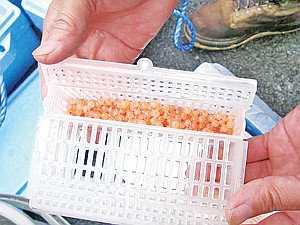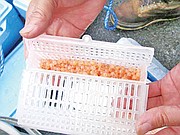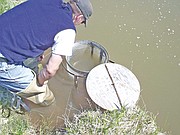EPA to begin fish testing
Since 1999, the Environmental Protection Agency has been assessing and remediating properties in and around town for Libby Amphibole Asbestos (LAA). Beginning next month, the agency will take those examinations to the water world that is so much part of life in northwest Montana.
For parts of three months — from April to June — the EPA will spearhead tests of the effects of LAA in waterways and its effects on fish in those streams, particularly Westslope Cutthroat Trout, which are native to this area.
According to Christina Progess, who manages Operable Unit No. 3 (OU-3), which is Vermiculite Mountain, for the EPA, the agency will place live-fish and embryonic experiments in Rainy Creek below and above the mine site. There also will be another monitoring site in a tributary to Pipe Creek, which has been selected as the “control site.”
According to Mike Hensler, a fisheries biologist with Montana Fish, Wildlife and Parks, the agencies will place fertile eyed-eggs and approximately three-inch fingerlings of the Westslope Cutthroat in various locations at these three sites. The number of testing stations at each of these stations has yet to be determined.
The EPA has selected April to June for these experiments because this is a time of peak run-off, when levels of LAA in the waterways tends to be at its highest.
The area below the mine on Rainy Creek was selected because of its high LAA content in runoff. Essentially, it will become the laboratory for the eggs and the fingerlings, which will be placed in small cages that will allow water to pass through them.
The case containing the eyed-eggs, is a plastic, slotted enclosure with a flip-top lid called a Whitlock Vibert box. It resembles the silverware trays of an automatic dishwasher with slots small enough to hold the eggs and the emerging fry. The emerging fry will have egg-sacks that will nourish their early development for about two weeks after emerging.
According to Hensler, these just emerged fry will stay in the water for a period just until their nourishing egg-sacks are consumed, at which point the cutthroat fry will be removed an analyzed for the effects of LAA.
“It’s my guess,” Hensler said, “the hatchlings will reveal the most about the effects of (LAA). This is a crucial period during a fish’s development, when their gills and reproductive organs are developing. Certainly, those reproductive organs will not be mature, but we still should be able to better determine the effects of (LAA) on fish at this young development stage.”
Also placed in the area of Noisy Creek — a tributary to Pipe Creek — will be screened cages with three-inch Cutthroat finglerlings, Henlser said.
The fingerlings also will be placed at all three locations — above and below the mine and at the Noisy Creek location, which will be the controlled area of the experiment.
“This will be different life-stage studies of the effects of LAA on the trout,” said Progess, of the experiments that will involve the EPA, Montana Fish, Wildlife & Parks, W.R. Grace and Golder Associates, an international environmental consulting and testing firm.
The agencies are entering uncharted territory, according to Dan Wall, is an environmental toxicologist with the EPA.
“Really, the gist of this there is very little information on the effects of LAA,” Wall said. “We’re just getting to know the effects on people. It’s effects on wildlife is virtually unknown.”





